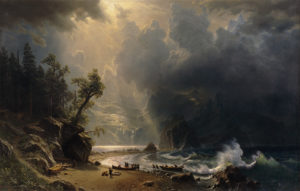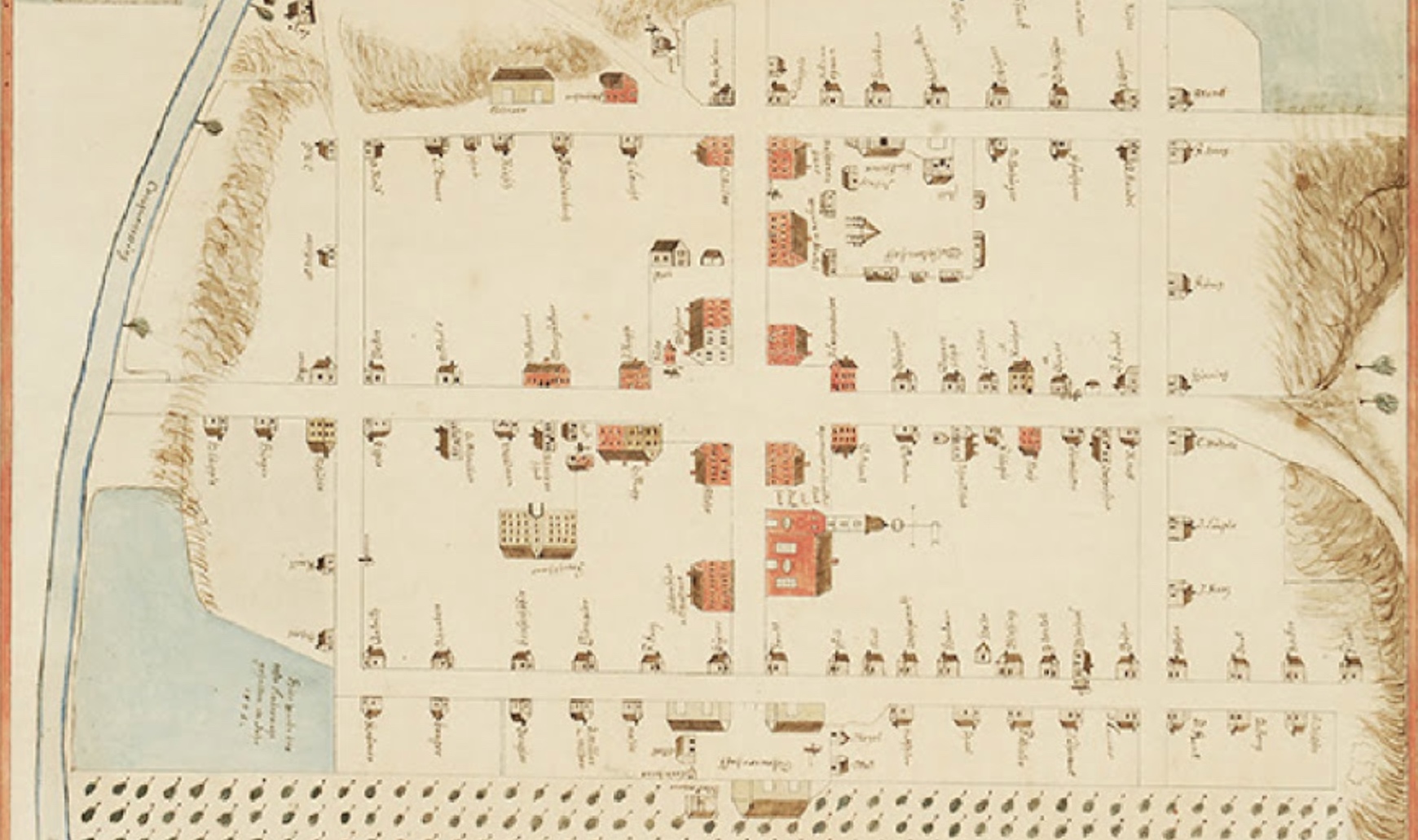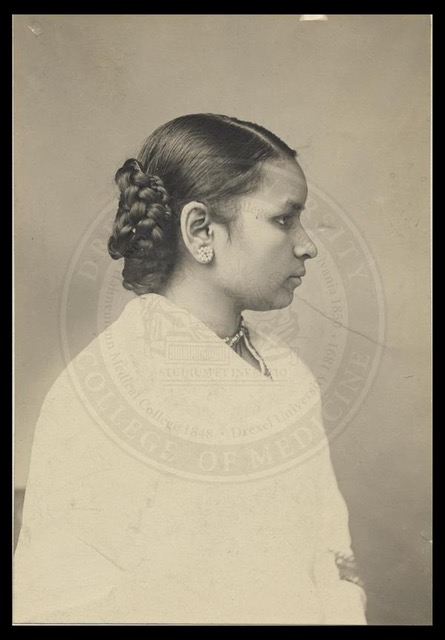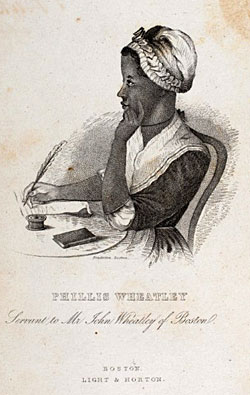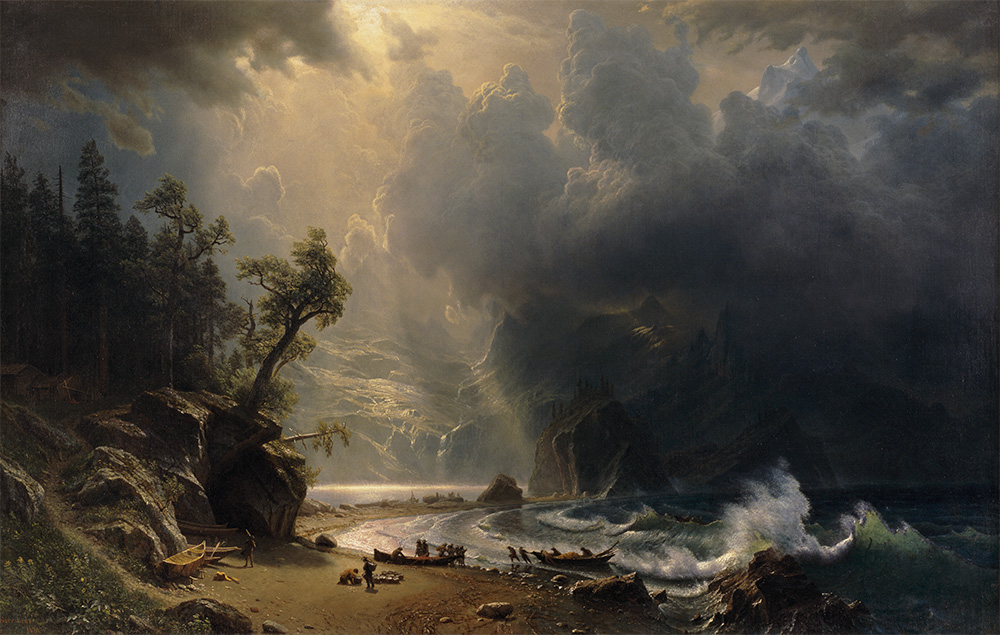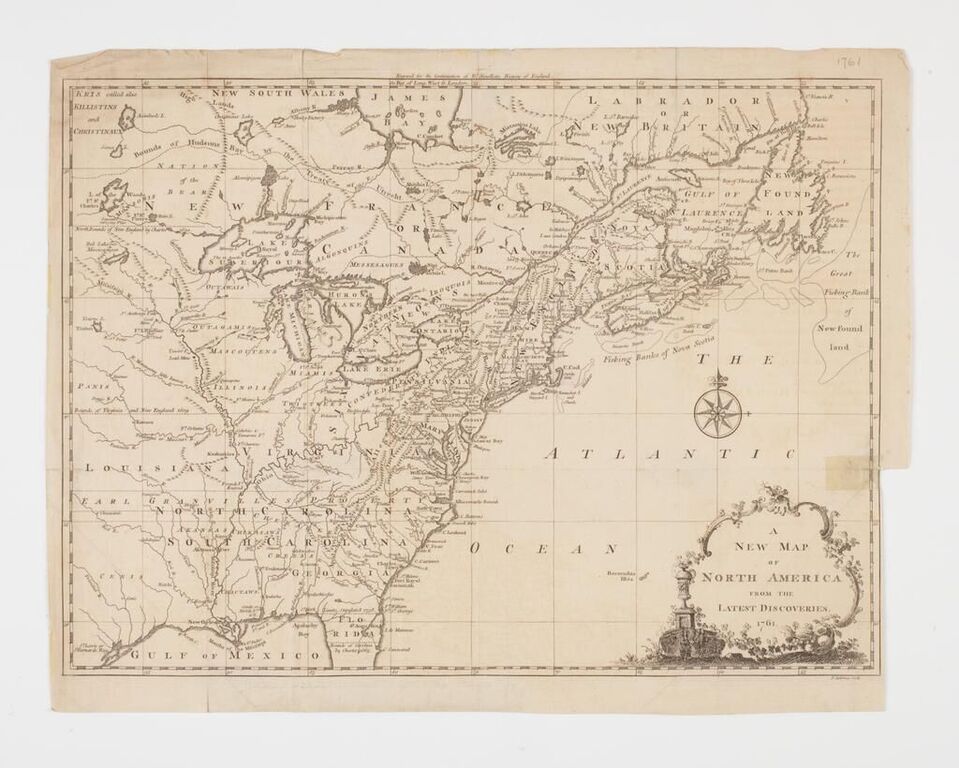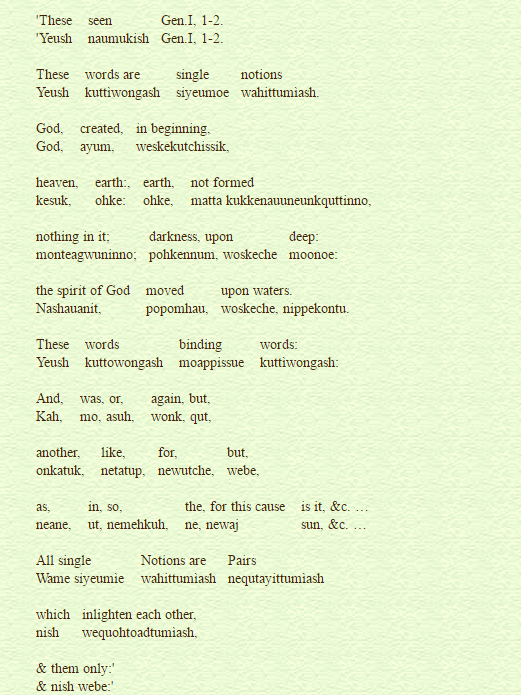Clearcut, tenure, snow
where the reservoir is.
In the hall of photos, each man
alone on his slope,
smiling up from the muddy question.
*
Here the logjam broke in the ’96 flood. Scientists filmed the churning of rock on rock. Tall cedars along the bank ground into shards. When the fragments are a particular size, when they are small enough, they rise to the surface and float out to sea.
*
In the lost and found, a box of notebooks. One asked about fire. One asked about the weight of birds. One asked if all were lost and a record kept.
The first to arrive were the trees. Second, the wood wreck of an Asian fishing boat: 1,700 years ago the slick black prow. 600 years ago a Spanish galleon. Its metal bent into fish hooks, joiners. Its metal all that remains (the placard says) of the tribe who found it.
*
Lewis and Clark survived on what they named arrow-root while building the winter fort. Locked it against what ran wild. If to speak is to call up what lies buried, who can blame Lewis for his silence? In the rain, in the wilderness of his own mind, Lewis named everything. Green green green: these lives bending and dividing. Multiplying.
*
green of fir green of cedar
green of yew green of hemlock
green of the vine green of the air
through moss green scarf waving
from each tree green to the river
green that falls across it
green that everywhere has fallen
green like a fishing net
green our hands upon it
The pristine wilderness, the untouched plains, the thousand thousand buffalo, the countless bears that Lewis and Clark saw: what looked like abundance was actually absence. Decades before the explorers set out, the smallpox virus swept ahead of them, back and forth across the land until many tribes had been reduced to a small band of survivors. The animals they’d hunted roamed free and multiplied, the land grew thick around them, and passing through, you could be forgiven for saying you had found Eden. Were not those survivors now your guides.
*
Copper and salt: the poor winter
I stretch again and again over me.
*
A grid of short trails unfurling. Tiny flags and hoods nearly touching. Within each frame a scattering of metal boxes. Stuck foil. Tape. So your poems, said the British geologist, there are no people in them?
In one part of the forest, cedars, dying, breathe through tubes. I had tried to find the waterfalls, tried to speak to the woman at the country store, tried to watch the light on the river. Where the cedars lay was a carpet. All on the carpet
was slowly becoming carpet. I was afraid to remain in one place. I walked a thin path around the cedars, past and up a slight hill where there was still only silence. Two cut logs: a desk and a chair. I sat and nothing in the forest moved.
Even my life vanished.
Last night, reading, I heard the geologist tapping on my window. For your poem, he said. Outside, the moon near full. As my eyes adjusted I saw a faint white circle etched in the sky, so wide the cedars nearly hid it. A hoop for the moon, a saucer. Spill of its yellow milk. Or say it happened
this way instead, without the geologist: I was bringing toilet paper from the car when the night sky lightened. Arms of white, I saw where the moon, like a leashed dog, had paced its dark yard bare.
I walked in the body of the whale, up-curved branches ribbing over me, exhalations of small spores, steam. The river a long way down. All held still and seemed free of other lives. Here a yellow coral, there a charcoal trunk. Nothing rolled down the hill. The river and the sky were equally far and often I mistook spiraling leaves for birds.
Where the path turned to shale I turned back. For my son I pocketed a green translucent snail-shell, for my daughter a knuckle of cedar. No bones, no bones. Just the careful green lives.
*
I can no longer hold the explorers’ days inside my own. Terrible rain at the center of their November is, this year, just sun. Burn piles. Small brown birds I can’t name, frost-weighted leaves falling like stones. Traps and jugs and flags: the work goes on while the scientists sleep, or while I do. This morning frost silvered our little clearing, and as morning went on our roofs gave off steam. A van of college students studying epiphytes idles in the lot. Later, the kids fill ice trays from the river. Whatever they are called swims.
NOTE: The stanzagraph form in which this piece was composed cannot be reliably conveyed on a web-based platform due to the variety of browsers with which readers view the site. In print, you can determine the geography of your page, leading to concrete poetry and other shaped, typographically experimental forms. The Web assumes that the same data will be viewed by an unpredictable array of devices—in some cases, not even viewed, but described by devices for speaking aloud. Recognizing that it would be near-impossible to lineate these stanzagraphs into the justified text blocks within which they were composed and in which they appear in the author’s book’s printed form, we instead present them here as loose paragraphs, leaning into the flexibility of the Web rather than struggling against it.
Poetic Research Statement
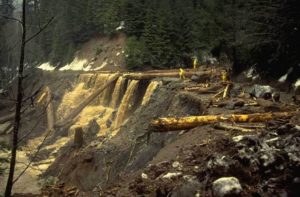
Lewis and Clark arrived at the Pacific Ocean in November 1805, exhausted, hungry and cold. They spent the winter in Fort Clatsop, a fort they built by hand from giant northwest cedar and hemlock. Their construction was complete on Christmas Day. The password to their fort was “No Chinook,” in reference to one of the Northwest tribal nations who were their neighbors that winter. After they left to return back east, the fort disappeared into this active forest, and successive replicas have burnt down. Our main evidence regarding the location of the fort is based on traces of mercury in the soil, hints of the mercury-laced medicines the explorers carried with them. By all accounts, the explorers had a soggy, unhappy winter here. I was first drawn into researching this winter of theirs out of curiosity about the oddly sad place-names scattered along the northwest coast. Sites like “Dismal Nitch” stood out to me in a landscape that was, to my mind, the opposite of dismal. I was a new mother at the time, and in my newly fragmented, soggy, exhilarating and yet at times dismal days, I approached this research as if it were a rope I could hold onto while venturing into my own new world.
Over the course of my research, my focus narrowed to incidents of scholarly erasure or elision—to moments in the journey, or in the journey’s wake, that could be seen as failures, but that had largely been spun, in historical accounts, as success, or which had been left out of most retellings, such as Lewis’s murder, on his way back east, of the Blackfeet Indian man, and the peace medal he hung around the dead man’s neck, and the fate of the “Indian vocabularies,” several dozen detailed word lists taken by the explorers as they met with indigenous people from different nations along the way—critical linguistic records that for the most part were never published. I understood these failures through the lens of racism and white privilege, and I was also learning to examine my own research and writing through that lens. As a white writer, it felt awkward and potentially embarrassing to try to talk about my racism and privilege. But the alternative—to plow forward in my work without having to speak of such urgent matters, without having to make myself vulnerable—felt like a continued infliction of my privilege. So I resolved to “fail better,” to expand the scope of my poetry, and the research I was doing, in a way that tried to make visible some of these sites of silence, erasure, and failure.
So much had already been written about the explorers, and about Thomas Jefferson’s intentions in sending them on their journey, that I did not anticipate finding any “new” information in my research. But three years in, during the November after I had composed “At the Experimental Forest,” I traveled to the east coast to visit the archives at the American Philosophical Society, Jefferson’s library at Monticello, the Library of Virginia, and the National Museum of the American Indian. I was trying to gain a clearer understanding of what had happened to the “Indian vocabularies” that the explorers had collected along their route, which according to many scholars had been destroyed by a thief who had stolen them from a riverboat. The sources I read never spent more than a glancing sentence or two on this historical anecdote. At the Library of Virginia, I located as-yet-unpublished court records that offered the identity of the man convicted of the theft and also indicated that the conviction was quick and light on evidence. At the American Philosophical Society, I accessed Jefferson’s late correspondence, in which he admitted that the vocabularies destroyed in the river did not include the ones collected by Lewis and Clark. Wanting to share what I had come across with contemporary indigenous linguists and historians, who might find a fuller history of the vocabularies useful, I published these findings as a separate paper in Wíčazo Ša Review: A Journal of Native American Studies. A version of this paper appears at the close of Wintering.
My research placed formal demands on my poetry. The importance of clarity—of, as a white writer, being crystal clear about what I was saying, particularly in regard to indigenous languages and history—led me toward prose. There were things I needed to explain, things that I knew needed to be included within the work, which was quite different from my previous approach as a poet of sitting down to a blank page and letting inspiration, or mental flight, lead me. This contextual demand led me toward sentences and paragraphs, away from the white space and ambiguity that lineated poetry can often brush up against.
At the same time, I’m not a historian, or a scholarly writer, and wasn’t interested in becoming one. I particularly wanted to resist the sort of scholarly tone I often encountered, one that assumed authority and certainty. While I wanted to be clear, I also wanted to avoid overstepping. One day I picked up a copy of Basho’s Narrow Road to the Interior, and in its haibun form found the perfect formal constraint for my work. Haibun is a sort of travelogue, tracking both inner (emotional/mental) and outer (observed) journeys, shuttling between the two. The form avoids imposed conclusions, preferring instead to lean fragments of prose and poetry against each other. My adaptation of the form includes what I call “stanzagraphs,” roughly six lines long, block-justified. I edited the content of each stanzagraph as a whole, paying particular attention to the turns between stanzagraphs. A stanzagraph is meant to read faster than lineated poetry but slower than a paragraph. This fit the demands of my research perfectly.
“At the Experimental Forest” is formally the loosest section of the book, but I think a shadow of the haibun and stanzagraph forms can still be seen. It is the middle section of the book, composed during a two-week residency at the HJ Andrews Experimental Forest, near Eugene, Oregon. With its thick canopy of cedar, fir, and hemlock and its mossy understory of nurse logs, all wrapped in northwest winter fog and rain, this forest is similar in many ways to the forest in which Lewis and Clark wintered. As in the other years of my research, I arrived in November, so that my dates would overlap with theirs.
The HJ Andrews Experimental Forest is one of twenty-six sites in the nation designated by the National Science Foundation for Long-Term Ecological Research. By design, all research projects conducted in the forest span hundreds of years, as generations of scientists record data and insight in logbooks that stretch far beyond any one scientist’s lifetime. Two hundred years is the minimum.
While the majority of the work conducted in the forest is scientific, there are writers and artists there too. Writers in residence compose new work at specific sites within the forest, recording in their creative work aspects of each site’s changes over the years. This program is called Long-Term Ecological Reflections, and is meant as a continuation of the forest’s mission. Over many decades, writers compose site-specific work and record it in open-ended logbooks, in the same fashion that the scientists record their data.
At Andrews the writers also stay in dorms with the scientists. I arrived in November 2011, carrying a box of books on ethnobotany, indigenous American history, translation theory, and the scientific and creative work that was produced in the explorers’ wake. My roommate was a young British geologist, who was very friendly and who gathered his data along a creek bed in the middle of the night—hourly—through raging storms. It sounded miserable, there was a little shack along the shore, but he was perfectly gung-ho. He politely tried to understand what I meant when I talked about the “failures” of both Lewis and Clark’s journey and the historical tales that have spun from it.
My curiosity came to be about the weight of looking on who/what is being observed. Some of the scientists I tried to explain this to heard my question, and my use of their good clear words—weight, who/what—as encroachment, a literary muddying. Uppity, though they did not use that word.
In my mind as I worked on this sequence were the nineteenth-century large-scale western landscape paintings showing that fall at the Seattle Art Museum in an exhibit called Beauty and Bounty in an Age of Exploration. These paintings, with their shimmering promise of beautiful land for the taking, lured more settlers westward.
Meanwhile I could feel my own looking, my own research and the scholarly tunneling I was getting increasingly deft at, weighing down the story I was trying to convey. Delete, delete, delete—I snipped down a lot of this sequence. But to what end?
I wanted to know what the weight of 200 years—the accumulation of time between Lewis and Clark’s arrival and now—felt like. But, like the scientists there focused on their corner of the work, I couldn’t see it. The forest was thick, and run through with very short trails that were built for scientific access, not meditative walks. I took walks there anyway, amid the numerous bits of colored tape and foil and measuring tubes. There was a cedar whose respiratory rate they were trying to measure as it died. And while most of the sites were marked by number, a few had names that referenced earlier use. “Gypsy Camp” was one whose name had been carefully changed.
As I read about translation theory and wilderness theory, I thought about the early American painters facing the problem of people walking through the scenes they were trying to portray as virgin, unpeopled, purely wild. I was trying to pretend that these woods were the same ones Lewis and Clark were in (close enough! a couple hundred miles!), trying to whittle my days into kismet and epiphany. In some ways this experimental forest sequence is about failure, about the privilege, and the cost, of my noodling. But it’s also about trying to undo erasure, to widen the frame to include what is uncomfortable or painful to see. To admit: to let in.
This article originally appeared in issue 17.2 (Winter, 2017).
Megan Snyder-Camp is the author of three books of poetry, most recently Wintering (2016) and The Gunnywolf (2016). She lives in Seattle.



